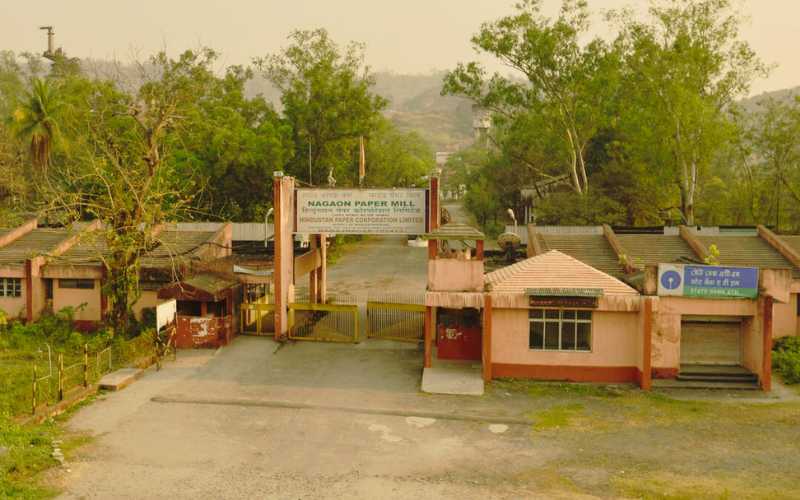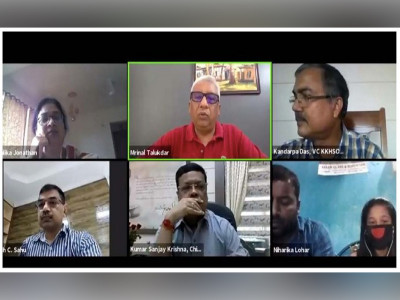
What can we learn from the failure of Nagaon Paper Mill at Jagiroad ?
The closure of the Nagaon Paper Mill at Jagiroad, once a symbol of industrial prowess in Assam, stands as a poignant reminder of the perils of mismanagement and its far-reaching economic repercussions. Established in 1973, the mill was celebrated across Asia for its pioneering use of Kamyr Continuous Digester technology, revolutionizing paper production with 100% bamboo as its raw material. However, despite its early success, the mill's eventual downfall serves as a cautionary tale, shedding light on systemic issues plaguing government-run entities and the broader Indian paper industry.
The Nagaon Paper Mill's demise was not a sudden event
but rather a culmination of years of mismanagement and neglect. Up until 2008,
the mill boasted a yearly production exceeding its installed capacity, a
testament to its efficiency and potential. However, within a decade, the
situation deteriorated dramatically, leading to its eventual closure in October
2015. The root causes of this downfall are manifold, ranging from financial
mismanagement to bureaucratic inefficiencies.
One of the key factors contributing to the mill's
demise was financial mismanagement. Despite its initial success, the mill
struggled to adapt to changing market dynamics and technological advancements.
This failure to modernize, coupled with a lack of prudent financial planning,
left the mill burdened with debts and unable to compete with private paper
producers. Additionally, allegations of graft and corruption at various levels
further eroded the mill's viability, highlighting the detrimental impact of
unethical practices on industrial enterprises.
The advent of new players in Assam's paper industry, notably ITC, triggered a paradigm shift with significant implications for local mills like the Nagaon Paper Mill. As Assam, blessed with abundant raw material resources, finds itself increasingly dependent on paper produced outside the state, the local industry faces unprecedented challenges, highlighted by the struggles of the Nagaon Paper Mill to compete with the new entrants.
The entry of ITC into Assam's paper market altered the
competitive landscape, leading to a surge in paper prices and exacerbating the
state's dependence on imported paper. With the price of standard quality paper
skyrocketing to nearly Rs 1 lakh per tonne, local mills like the Nagaon Paper
Mill have found themselves at a disadvantage, unable to match the economies of
scale and efficiency of the new players.
Despite its rich history and pioneering use of technology,
the Nagaon Paper Mill faltered in the face of intensified competition. The
inability to compete with the pricing and production capabilities of ITC and
other private players casted a shadow over the future viability of the mill,
leaving its employees and stakeholders in a state of uncertainty.
The challenges facing the Nagaon Paper Mill underscore
broader issues confronting Assam's paper industry, including the need for
modernization, innovation, and strategic adaptation to changing market
dynamics. While the mill's closure reflects the harsh realities of an
increasingly competitive market, it also serves as a wake-up call for industry
stakeholders and policymakers to rethink strategies for revitalizing the local
paper industry.
The aftermath of the closure of the Nagaon Paper Mill and the Cachar Paper Mill paints a grim picture of the plight faced by their former employees, who have been left grappling with financial uncertainty and hardship since the mills ceased operations. With salaries and other dues unpaid for years, the employees have been thrust into a state of distress, struggling to make ends meet and support their families.
The closure of the mills, owned by the Central
government-controlled Hindustan Paper Corporation Limited (HPCL), was
attributed to a shortage of working capital, underscoring systemic issues
plaguing the management and operations of these state-run enterprises. While
the exact reasons behind the financial woes remain subject to scrutiny, the
repercussions have been acutely felt by the employees, who have borne the brunt
of the mills' downfall.
For the employees of the Nagaon Paper Mill and the
Cachar Paper Mill, the absence of salaries and other dues has compounded their
financial woes, leaving them in a precarious situation with limited avenues for
recourse. Despite assurances and promises of assistance from various quarters,
including the state government, the employees continue to grapple with
uncertainty and despair, unsure of when or if they will receive the
compensation owed to them.
The failure to address the plight of the mill workers
underscores broader issues surrounding labor rights, corporate governance, and
the responsibilities of state-owned enterprises towards their employees. While
efforts have been made to secure financial assistance for the revival of the
mills, the immediate needs of the employees cannot be overlooked or deferred
indefinitely.
As Assam seeks to chart a path towards economic
recovery and revitalization, the concerns of the mill workers must be given due consideration and urgency. Concrete steps must be taken
to ensure that the employees receive the compensation and support they
rightfully deserve, while also addressing the underlying issues contributing to
the mills' closure and financial woes.
Disclaimer: The opinions expressed in this article are those of the author's. They do not purport to reflect the opinions or views of The Critical Script or its editor.

Newsletter!!!
Subscribe to our weekly Newsletter and stay tuned.

















Related Comments